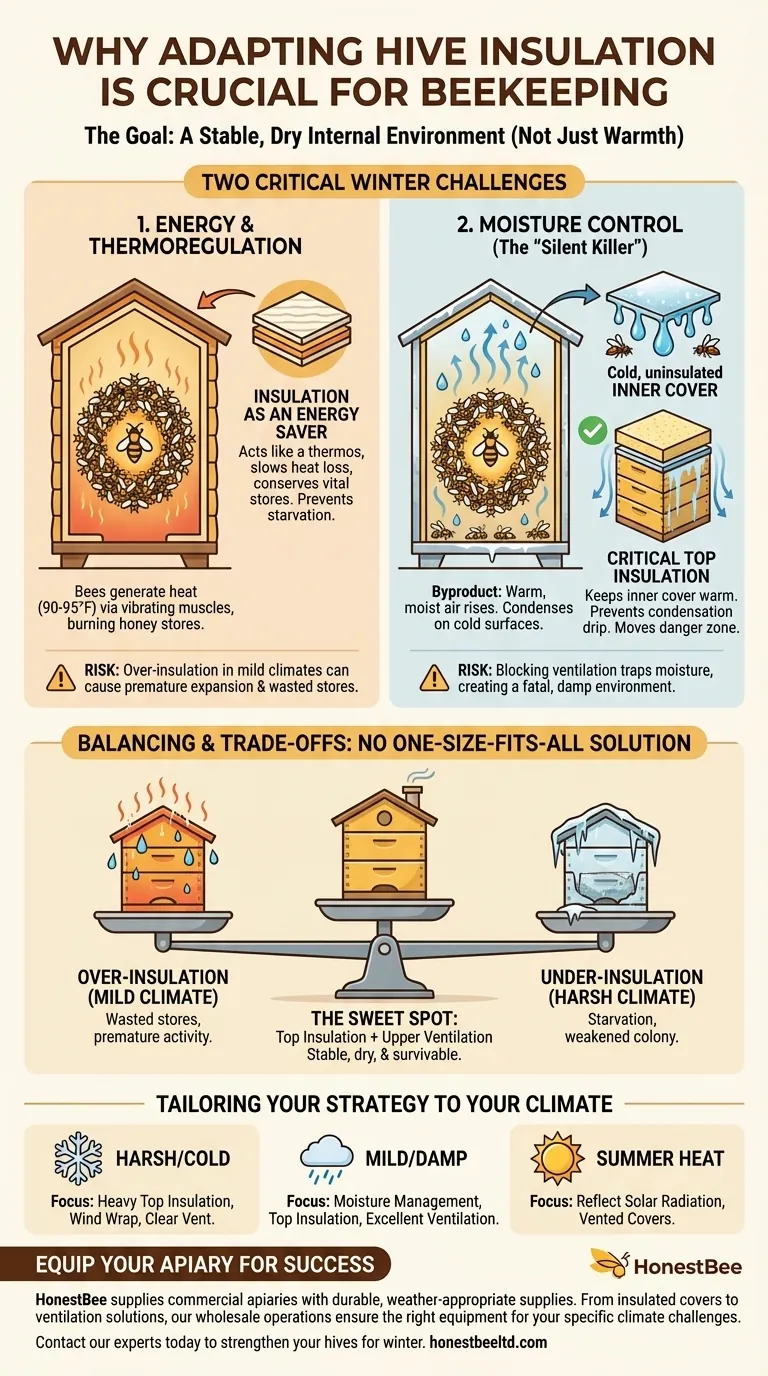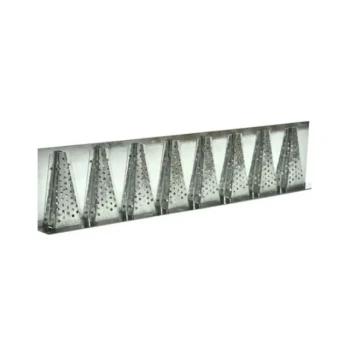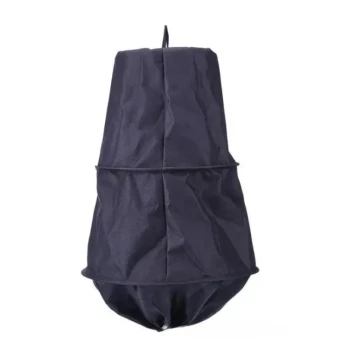At its core, adapting hive insulation is crucial because it directly influences a honey bee colony's two most critical winter challenges: energy consumption and moisture control. Proper insulation allows bees to conserve their finite food stores for survival, while improper insulation can lead to condensation and dampness, which is often more lethal than the cold itself.
The goal of insulation is not simply to keep bees warm, but to create a stable, dry internal environment. This allows the colony to manage its own temperature and resources efficiently, dramatically increasing its chances of survival and emerging strong in the spring.

The Core Challenge: Energy and Thermoregulation
A honey bee colony's survival through winter is a battle against heat loss. Understanding how they manage this is key to understanding the role of insulation.
How Bees Generate Heat
Bees do not heat the entire hive cavity. Instead, they form a tight winter cluster around the queen to maintain a core temperature of around 90-95°F (32-35°C).
They generate this heat by vibrating their powerful wing muscles. The fuel for this activity is their stored honey.
The Role of Insulation as an Energy Saver
Insulation acts like a thermos, helping the bees retain the heat they generate within the cluster.
By slowing heat loss, good insulation means the colony has to burn less honey to maintain its core temperature. This conserves their vital winter food stores, reducing the risk of starvation.
The Dangers of Inappropriate Warmth
In milder climates or during a warm spell in winter, excessive insulation can be detrimental.
It can trick the cluster into expanding or breaking prematurely. This increased activity burns through honey stores at an accelerated rate and can prompt the queen to start laying eggs too early, straining the colony's resources.
Beyond Warmth: The Critical Role of Moisture Control
While temperature is important, the silent killer in many hives is moisture. Managing condensation is arguably the most important function of winter hive preparation.
The Byproduct of Survival: Condensation
As bees metabolize honey and respire, they release a significant amount of warm, moist air.
When this moist air rises and hits a cold surface—like an uninsulated inner cover—it condenses into water droplets. This cold "rain" can drip down onto the cluster, chilling and killing the bees.
How Insulation Manages Condensation
Placing a rigid foam board or other insulation on top of the inner cover is critical. This keeps the inner cover's surface warm.
Instead of condensing on the ceiling above the bees, the moist air now drifts to the cold hive walls, where it condenses and runs down harmlessly. This moves the danger zone away from the colony.
Balancing Insulation and Ventilation
A hive cannot be an airtight container. A small upper entrance or vent is essential to allow excess moist air to escape.
The combination of top insulation and upper ventilation creates a system that retains heat where it's needed (around the cluster) while actively removing damaging moisture from the hive. A dry, cold hive is far more survivable than a damp, cool one.
Understanding the Trade-offs
There is no one-size-fits-all solution for hive insulation. Applying the wrong strategy for your specific climate can do more harm than good.
Over-Insulation in Mild Climates
In regions with mild winters, wrapping a hive can cause it to overheat on sunny days, leading to unnecessary activity and rapid consumption of honey stores. The focus here should be primarily on moisture control via top insulation.
Under-Insulation in Harsh Climates
In cold climates, failing to provide adequate insulation forces the bees to burn through their honey at an unsustainable rate. This leads to starvation and weakens the colony, making it more susceptible to diseases like Nosema.
The Risk of Blocking Ventilation
The most common mistake is insulating a hive so thoroughly that you block its ventilation paths. This traps moisture, creating a damp, moldy environment that is extremely stressful and often fatal for the colony.
Tailoring Your Strategy to Your Climate
Effective insulation requires you to adapt your approach based on your local weather patterns and beekeeping goals.
- If your primary focus is surviving harsh, cold winters: Emphasize heavy top insulation to manage condensation and consider wrapping the hive to block wind, ensuring a small upper vent remains clear.
- If your primary focus is navigating mild, damp winters: Prioritize moisture management with top insulation and ensure excellent ventilation, but be cautious with hive wraps that could cause overheating.
- If your primary focus is managing summer heat: Your goal shifts to reflecting solar radiation with light-colored or vented outer covers to prevent the hive from overheating, which reduces colony productivity.
By understanding these principles, you move from simply covering a box to actively managing the colony's environment for its health and survival.
Summary Table:
| Insulation Goal | Key Benefit | Potential Risk of Improper Use |
|---|---|---|
| Energy Conservation | Reduces honey consumption for heat, preventing starvation. | Over-insulation in mild climates wastes honey stores. |
| Moisture Control | Prevents condensation from dripping on the cluster, which is often fatal. | Blocking ventilation traps moisture, creating a damp, moldy hive. |
| Climate Adaptation | Tailored approach (e.g., top insulation for cold, ventilation for mild climates) maximizes survival. | One-size-fits-all insulation can harm the colony more than help. |
Equip your apiary for success in any season. Proper hive insulation is a cornerstone of sustainable beekeeping. At HONESTBEE, we supply commercial apiaries and beekeeping equipment distributors with the durable, weather-appropriate supplies needed to protect your colonies and optimize honey production. From insulated covers to ventilation solutions, our wholesale-focused operations ensure you get the right equipment for your specific climate challenges. Contact our experts today to discuss your needs and strengthen your hives for winter.
Visual Guide

Related Products
- Professional Galvanized Hive Strap with Secure Locking Buckle for Beekeeping
- Heavy-Duty Nylon Beehive Hive Strap with Stainless Steel Cinch Buckle
- Versatile Ratchet Hive Strap with S-Hooks for Secure Fastening
- Endless Loop Ratchet Hive Strap
- Australian Langstroth Beehive Boxes for Beekeeping Wholesales
People Also Ask
- How can beekeepers secure the top cover of a hive? Protect Your Colony from Wind and Weather
- Can straps with hook ends be used for beehives? A Guide to Secure Hive Management
- What is the advantage of using cam buckle straps? Secure Your Load Fast with Simple, Safe Tensioning
- What are hive straps and why are they used? Secure Your Hives Against Wind, Predators, and Transport
- What are the two styles of hive straps? Choose the Right Strap for Your Hive Security



















